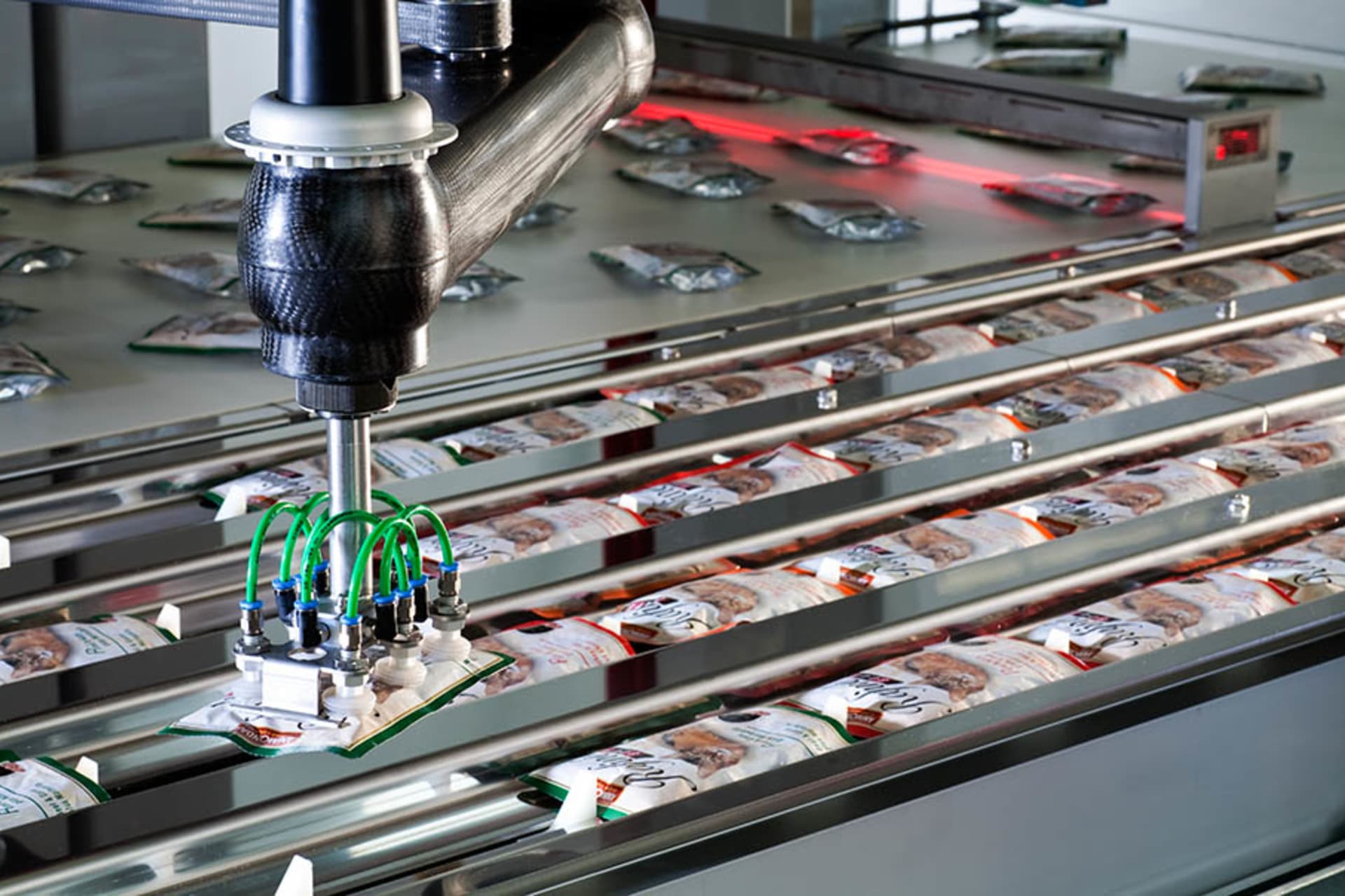Packaging line with a wide variety of formats
Unsorted pallet containers of ‘Stand-Up’ pouches are transported to the mixing centre via forklift trucks, where they are unloaded and taken to pick-and-place robot cells. Robots sort the pet food lying in the divisions of a four-lane flighted product feed chain. If the controller establishes that insufficient pouches of a specific variety are arriving, the chain is temporarily slowed down.
A step-chain stands up the pouches. As soon as a pattern is complete, a F2 robot transfers the packs to a grouping table. Two paddles reduce the group spread by up to 50 per cent prior to loading them into previously erected cartons and are then sealed with a separate lid.
The finished cartons are labelled on the long side or on a corner and provided with a code. The labelling devices receive the necessary data from the company’s ERP software. A checkweigher ensures that every single carton is complete. Shipper trays are erected in the last sub-machine. Pre-grouped cartons are placed into the shipper tray. The appealingly packed pet food, packed with the correct combinations, are now transferred to the next steps in the packaging process, namely palletising and stretch wrapping.
- Shelf-ready packaging and multi-packs (ten carton sizes)
- Two double-row shelf-ready variants (sticking two cartons together)
- Types: up to four varieties in a pack
- Mixed packs with different combinations of varieties as well as unmixed packs
- Packaging in shelf ready trays (six formats)
- VMS controller ensures a consistent process at belt speeds of up to 25 m/min




